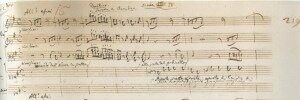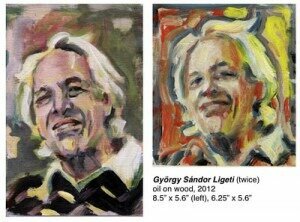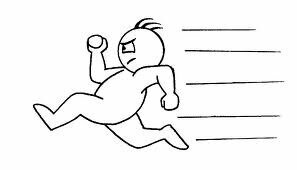 As Einstein noted, time is relative, and for music this is especially true. Tempo, the speed at which music is performed, is not something that is set in stone. Every Allegro movement doesn’t move at the same speed, but is Allegro in comparison to the other movements that accompany it. Most of the words we use to refer to tempo, usually as shown in movement names, come from Italian. Because Italian music dominated the musical scene in Europe during the Baroque era (1600-1750), Italian tempo designations predominate. It wasn’t until the late 19th century that other languages such as French, German, and finally, English started to appear.
As Einstein noted, time is relative, and for music this is especially true. Tempo, the speed at which music is performed, is not something that is set in stone. Every Allegro movement doesn’t move at the same speed, but is Allegro in comparison to the other movements that accompany it. Most of the words we use to refer to tempo, usually as shown in movement names, come from Italian. Because Italian music dominated the musical scene in Europe during the Baroque era (1600-1750), Italian tempo designations predominate. It wasn’t until the late 19th century that other languages such as French, German, and finally, English started to appear.

Mozart – nozze autograph
Largo (Italian: large, broad). One of the slowest tempo markings. Often used where something important needs to be said.
Dvořák: Symphony No. 9 in E Minor, Op. 95, “From the New World”: II. Largo

Mendelssohn – Midsummer
Barber: Adagio for Strings, Op. 11
Andante (Italian: at a walking pace, easy-going, fluent, uniform; from the verb andare: to walk). Originally an indication of performance manner (i.e., a walking bass line) rather than a tempo. Later it meant a piece at a moderate tempo, faster than Adagio.
Ligeti: Andante and Allegretto: I. Andante cantabile

Ligeti – Andante
Vivaldi: The 4 Seasons: Violin Concerto in E Major, Op. 8, No. 1, RV 269, “La primavera” (Spring): I. Allegro
Vivace (Italian: flourishing, thriving, full of life). This appeared in the mid 17th century, equated with Allegro. By the 18th century, Vivace indicated a mood that was lively and vivacious rather than a tempo indication.
Mendelssohn: A Midsummer Night’s Dream, Op. 61: Act I: Scherzo – Allegro vivace

fast
Mozart: Le Nozze di Figaro: Overture
As I mentioned in the beginning, it’s the relative position of music that makes us hear it as fast and slow. It was Corelli in his trio sonatas who set up the model for movements in Fast-Slow-Fast order and by the time of Vivaldi’s string quartets, we see this as, variously Allegro–Largo–Allegro or Allegro–Adagio–Allegro. The four-movement symphony form changed it again to Allegro–Andante–Minuet and Trio–Allegro. Each genre kept the alternation of slow and fast and, with the separation of the two Allegro movements, we often find that in performance, the final Allegro is somewhat faster than the opening Allegro. Yet, composers sought to codify the sound in their ear and turned next to a new invention by a certain Johann Nepomuk Maelzel, about which I will tell you more next time.


Tempos such as Lento, Moderato and Allegretto are notably missing here as they’re used just as frequently as the ones mentioned.